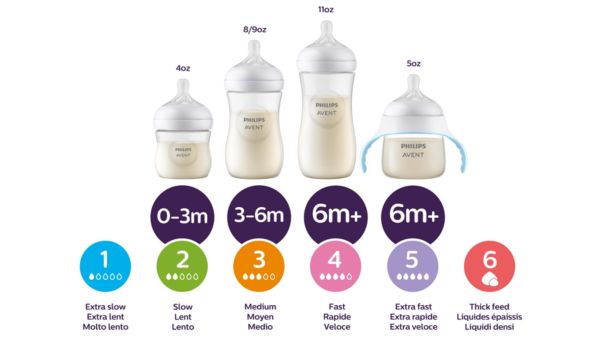Newborn babies tend to follow the same pattern when breastfeeding as they do while bottle-feeding. We recommend watching your baby's cues to find the best teat flow rate.
The Natural Response teats are designed to respond to the way your baby drinks. But you might not yet know how your baby drinks from the bottle.
In general, we recommend starting with the teat that comes with the bottle and adjust from there. If you have no success after a few feeding attempts, change to a teat with a different flow rate.
Use a teat with a higher flow rate if:
- Your baby is not getting enough milk from the bottle or
- The duration of the feed is too long (for example, longer than 30 minutes) or
- Your baby falls asleep during feeding, gets frustrated or plays with the teat instead of drinking.
Use a teat with a lower flow rate if:
- Your baby is gulping the milk down or
- Milk leaks out of their mouth during feeding.
Let your baby's drinking style guide you, not their age. Babies who have an enthusiastic drinking style often use strong suction and compression while drinking, resulting in greater milk flow. Therefore, they usually need a lower teat flow, such as teat number 1 or 2, to avoid overflow. Slow-and-steady-drinking babies are likely to prefer a higher teat flow (such as teat numbers 4 or 5/6) to ensure that enough milk flows, regardless of the baby's age.
If you used the previous Philips Avent Natural teat, your baby will need a higher flow rate with the Natural Response teat because they are used to more milk flowing quickly with less effort.

